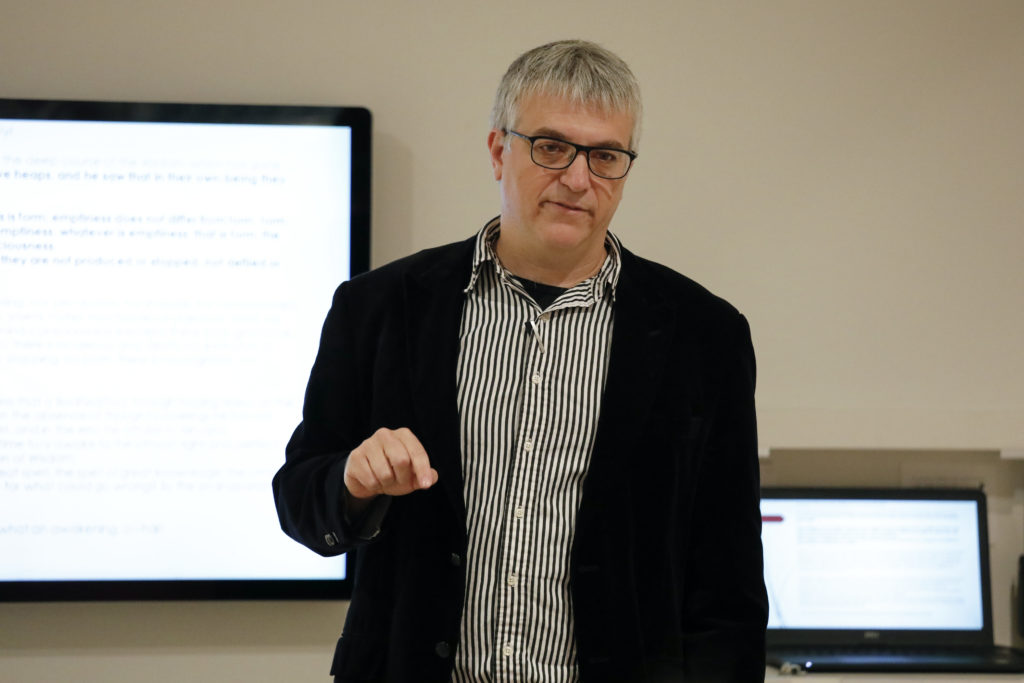Updated: Aug. 31, 2018 at 1:38 p.m.
A religion professor on Thursday discussed the history and importance of a popular Buddhist scripture currently on display at the Textile Museum.
Eyal Aviv, an assistant professor of religion, gave the talk, titled “The Art of the Heart Sutra.” The event was named for the scripture, which describes the fundamental beliefs of Mahayana Buddhism, a sect of the faith.
The one-page document, which is written in Chinese and Sanskrit calligraphy across a white Japanese robe at the museum, was first developed in the first century C.E. and is famous for breaking from traditionalist Buddhist views.
The text famously features the line, “Form is empty. Emptiness is form.”
“For the people who wrote it and the people who chanted it, that encapsulated the heart of the Buddhist teaching of the essence of what the Buddha wanted to convey,” Aviv said.
The event was part of the museum’s “Textiles at Twelve” series, a weekly lunch program featuring movies, lectures and gallery discussions.
Aviv explained how the brief scripture radicalized the Buddha’s message – that in a person’s self there is not one essence that is never changing, but rather a system of physical and psychological processes that are not able to be controlled.
He said the Heart Sutra stands out from previous Buddhist scriptures because the text’s major hero is not the Buddha. A character in the text named Sariputta, one of Buddhism’s most celebrated disciples, isn’t the great teacher who explains the Buddha’s wisdom, Aviv said, but rather the “guy who doesn’t get it.”
“If in the Christian tradition, Jesus suddenly started to get discourses and listen to the gospel of Christianity from someone else, it’s really, really disturbing for people who read it and get used to thinking about Sariputta as this sage and hero of the Buddhist tradition,” he said.
Aviv added that the document is both “revolutionary” and “controversial” because it challenges the human tendency to “essentialize” – to characterize certain traits to a person or object.
“The idea is that we tend to conceptualize the world in a rigid category, so we tend to learn that this is a dog and this is a cat – we forget that these are categories that we created to make the world more easily accessible to us,” Aviv said.
Aviv explained that the Buddhist tradition recognizes the tendency to essentialize as a major source of suffering. He said people today tend to essentialize race and gender – contributing to racism and sexism – which puts the Heart Sutra ahead of its time.
“The fact that a female and male have different biological organs does not mean that a female’s natural place is in the kitchen,” Aviv said. “This is not an essence in the female or the male; this is an essence that we impute onto those categories.”
The robe inscribed with the Heart Sutra text was donated to the Textile Museum in 2017 and will be on display through winter 2019, according to Morgan Kuster, an education assistant at the museum.
This post was updated to reflect the following corrections:
The Hatchet incorrectly spelled Morgan Kuster’s name. It is now spelled correctly. Due to a misstatement from a source, The Hatchet also incorrectly reported that the robe will be on display through April 2019. It will actually be on display through winter 2019. We regret these errors.





